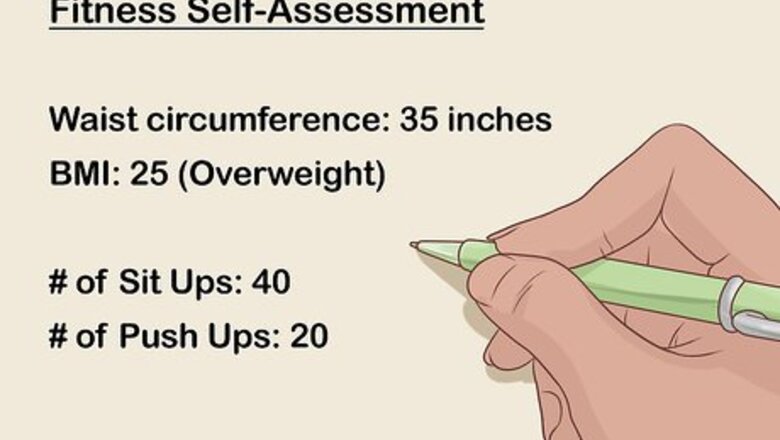
views
Evaluating Your Circumstances and Goals
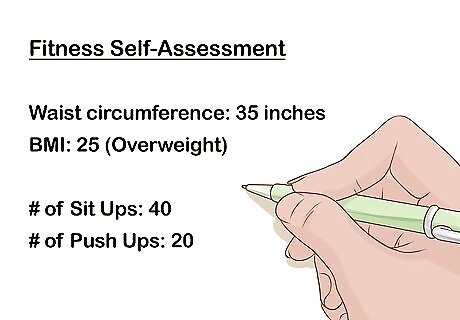
Complete a fitness self-assessment. Record your pulse rate and time after completing a 1 mile (1.6 km) walk. Write down how many situps or pushups you can do at one time. Record how far you can reach beyond your toes when sitting on the floor with your feet in front of you. Measure your waist circumference and calculate your body mass index (BMI). If you have chronic health issues or feel uncomfortable completing any of the above assessment exercises, skip this step and go straight to seeing your doctor first. You can use this information to track your progress over time. For example, you should be able to complete more pushups after 6 months of working out.

Talk with your doctor about your current health. Your doctor will likely do a comprehensive physical examination. This will reveal whether or not you should avoid certain types of programs due to your current health. They will also check for potentially hidden problems, such as heart arrhythmias. Discuss with your doctor what types of exercises they would suggest to meet your fitness goals. For example, if you are overweight, then your doctor might request that you avoid exercises which will place extra strain on your leg joints.

Decide on your fitness goals. Think about why you want to start a new exercise program or change your current one. Do you want to lose weight or tone up? Do you plan to concentrate on certain parts of your body? Do you need to rehab a prior injury? Are you training for an event, such as a marathon? Knowing your ultimate goal can keep you motivated and help you to choose your final program.

Go with activities that you enjoy. Think about those times that you’ve been active and which activities you’ve felt the best doing. If you enjoy dancing when going out, then you might want to take a dance class. If you like being on the water, then consider rowing or swimming. If you ride your bicycle for leisure, then cycling might be for you. Linking your interests with your program will make you more likely to stick with it.

Take your schedule into account. Look over your calendar and think about those days which seem to be particularly hectic. You may want to avoid working out on those days, or plan to use exercise as a stress reliever at the end of the day. Also, be realistic about how much time you really have to spare during the week for exercise. For example, if you work late on Mondays, you may need to skip exercising that day or do your program early in the morning.

Consider your budget. Keep in mind that gym memberships can be costly. Fitness classes can be even more expensive, depending on where they are taken. If you decide to go the gym or class route, make sure to shop around before enrolling. You can also consider using the great outdoors for your workouts by running, walking, biking, or even playing outdoor sports. For a free alternative to exercise classes, look for workout videos on YouTube or rent exercise DVDs from your local library.
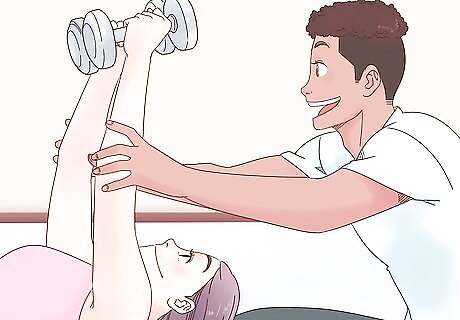
Work with a personal trainer. If you are still not sure which exercise program to choose, a personal trainer can be an excellent resource. After you tell them your goals, they can design a program just for your needs. Then, you can stay with that trainer to work out. It’s also possible to take what you’ve learned from them and try to apply it on your own. A personal trainer will show you how to exercise safely and effectively. If you decide to move forward solo, just make sure to be careful when trying out any new exercises.
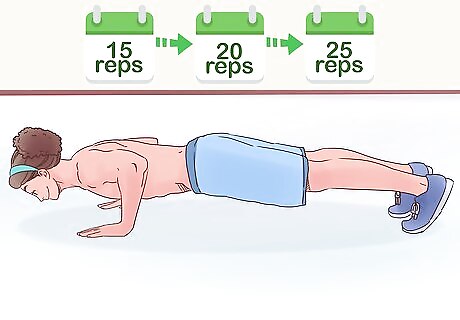
Begin with a low impact program. It’s important to start slowly with a new program, regardless of your fitness level. Look for a program that will gradually increase in difficulty over time. Make sure to set goals for yourself within the program that will let you know when it’s time to progress. Starting off slowly also lets you master your technique and not rush. For example, you might start with 15 push-ups and then add on a few more each week. You could even get to a point where you do weighted or angled push-ups.
Creating a Well-Rounded Program

Plan for at least 75 minutes of aerobic activity per week. To keep yourself healthy and to reach your fitness goals, you’ll need to do at least 75 minutes of vigorous, intense working out. This means that your heart rate will rise and will stay steady for that period. If you are starting out, you can do 150 minutes of moderate intensity aerobic activity instead. For example, you can plan to run on the treadmill for 4 20-minute sessions each week. For a more moderate option, you could take 5 30-minute brisk walks around your neighborhood. You can tell that your program is moderate if you can talk normally but can’t sing. With a vigorous program, you can only say a few words at a time.
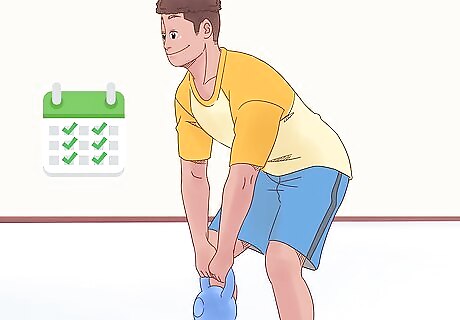
Plan to strength train at least twice per week. For each session, concentrate on a variety of muscle groups. Training for 2-3 days per week allows you to work out all of your muscle groups so you're getting a well-rounded workout. If you are just starting out, a session where you do single session reps of 12-15 is usually enough.

Incorporate a warm-up and cool down routine. Allot between 5-15 minutes for a quick warm-up prior to each of your workouts. You can hop on the exercise bike, do jumping jacks, or complete a quick jog. After your workout, take another 5-10 minutes to cool down and slow your heart rate by exercising at a lower level. Finish with some stretches to keep your muscles loose. Fit your warm-up and cool down routine to your surroundings. If you are in a gym, you might jump on an exercise bike. If you are outside, try jogging for a few minutes instead. Make sure your warm-ups are targeting the muscles and joints you're going to be working out that day. You want to be taking these joints through their full range of motion during your warm-up.
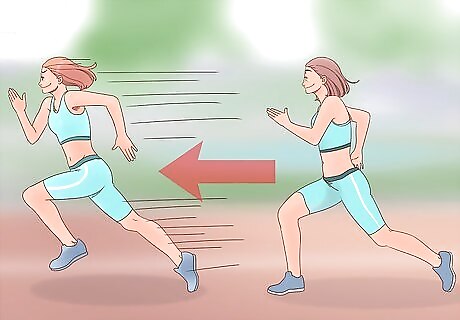
Do interval training. If you work out your body at the same pace all the time, then it gets bored and will not progress. Avoid this by switching between intense and moderate levels of activity during each exercise session. If you are cycling, for example, you might bike for 90 seconds at your fastest pace followed by a 30 second moderate pace and so on.

Plan to work a variety of muscle groups. As you think about your program, consider which exercises trigger and tire out which muscles. Make sure that your program evenly addresses all areas of your body. Once you develop a schedule, stick to it to make sure that all of your muscles get equally exercised. If you are a runner, then you may want to develop your upper body by rowing or doing free weights. If you are a boxer, then running might help you, too. For example, chest, legs, and back are all large muscle groups.

Consider balance training to improve your center of gravity. Balance training will put you into an unstable environment that challenges your body to maintain control. Not only does balance training help with stability, it also builds up core muscles. For instance, this might mean standing on a balance beam or wobble board, exercising on 1 leg at a time, or balancing between 2 exercise balls for a set amount of time.
Exercising for Specific Goals
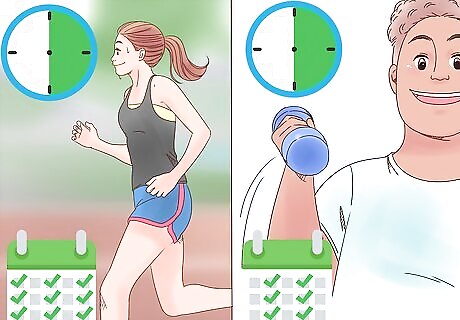
Complete a balanced program of aerobic and resistance activities for general health. To keep in good shape, try taking a brisk 30-minute walk or run at least 3 times per week. Then, on 3 of your non-aerobic days, hit the gym for a 30-minute weight session. Adjust your times and weight amounts as you improve, so that your body stays challenged.

Focus on high-intensity interval training for weight loss. For a single day out of the week, spend 30-45 minutes pushing yourself to your limits on cardio for brief intervals followed by even shorter recovery periods. This is interval training. You can also complete interval training by rotating between intense cardio and weightlifting. For your non-interval days, you can do extended sessions of cardio or take a rest day.

Build muscle mass by lifting heavier weights in fewer repetitions. Instead of completing 8-12 reps of a particular weight exercise, drop your reps down to 6-8. Then, make a point to lift your very maximum weight for each of those reps.
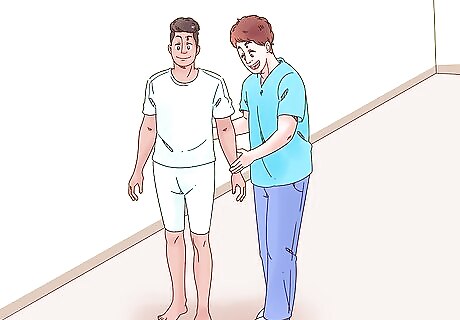
Rehab for a prior injury by going slowly. Start each program by walking to stretch out your muscles and build up your cardio endurance. This will also give you a chance to notice if anything hurts from your injury. Move on to a weight and cardio program that is about 20% of the difficulty of what you did pre-injury. If you are worried about your injury, you might want to work with a personal trainer or physical therapist, at least early on.

Train for an endurance event by varying your program. You’ll likely need to start training months prior to the actual event. If you stick to the same routine for this whole time, then your body will get bored. If you are a runner, switch between long, short, interval, and hill runs.




















Comments
0 comment